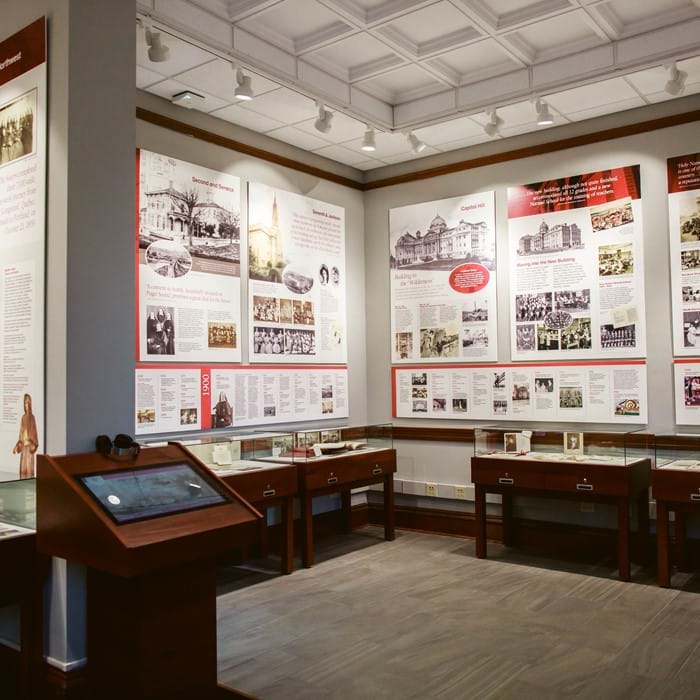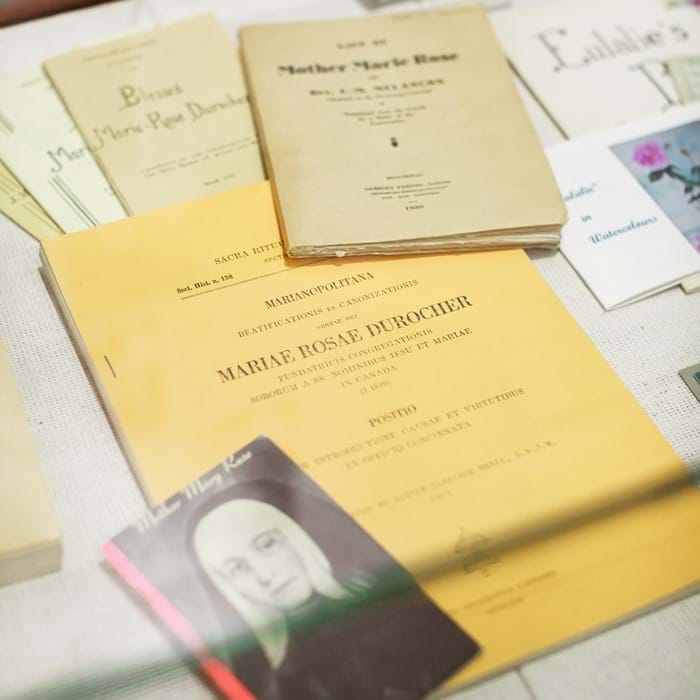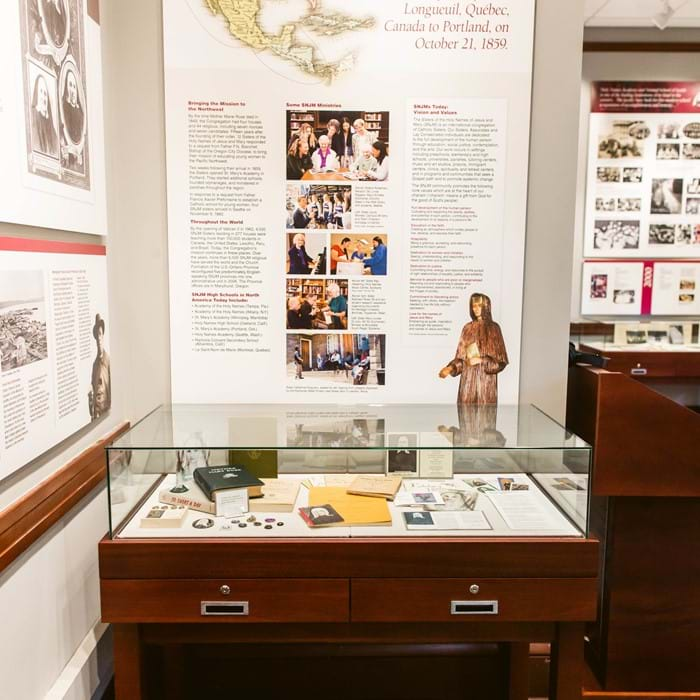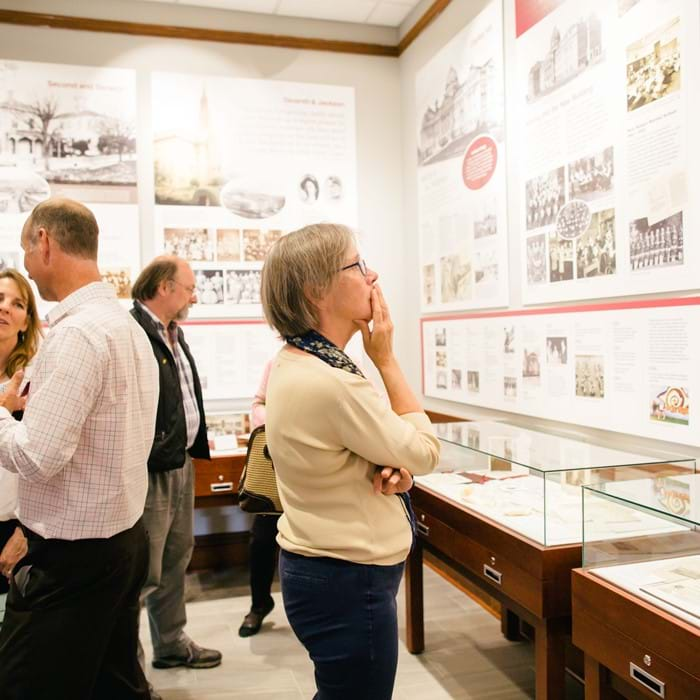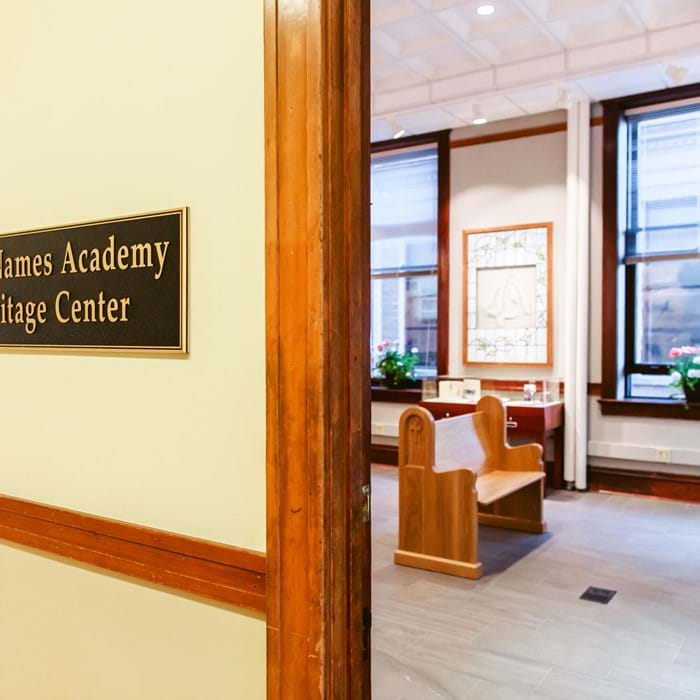Our History
Our History
History
The First Century
Holy Names Academy was founded in 1880 by the Congregation of the Sisters of the Holy Names of Jesus and Mary. This religious community—guided from its inception in 1843 in Québec, Canada, by the vision of its foundress, Blessed Mother Marie Rose Durocher—is dedicated to providing education for young women. In 1859 the Congregation first sent sisters to Oregon; some 20 years later, Father Francis Xavier Prefontaine asked them to establish a Catholic school for young women in Seattle. Four sisters, led by Sister Mary Francis Xavier, arrived on November 9, 1880.
The Academy began in two buildings at Second and Seneca Streets with 21 day students, one boarder, and one music student. Four years later the school’s growth and the press of downtown development in the young city necessitated the move to a new building at Seventh and Jackson Streets.
The Move to Capitol Hill
By the turn of the 20th century, the school and city’s growth again caused the sisters to move, this time to what was then considered “the wilderness” of Capitol Hill. Under the leadership of an energetic new Superior, Sister Mary Leontine, construction of the present Holy Names Academy began in 1906 on a full square city block, extending from East Aloha Street to Roy Street between 21st and 22nd Avenues East. Bishop Edward J. O’Dea presided at the cornerstone laying in 1907 and at the dedication of the school on November 9, 1908.
The new building accommodated all 12 grades and a new Normal School for the training of teachers. When it opened, 17 sisters taught 155 day students and 127 boarders. In 1909, the auditorium was completed, a project given priority so that proceeds from music and drama presentations could be used to fund other work on the building. The chapel was completed in 1925, the music department in 1929, and the underground tunnel— now used for locker space—in 1948. The school’s first elevator, now one of Seattle’s oldest, was installed in 1931.
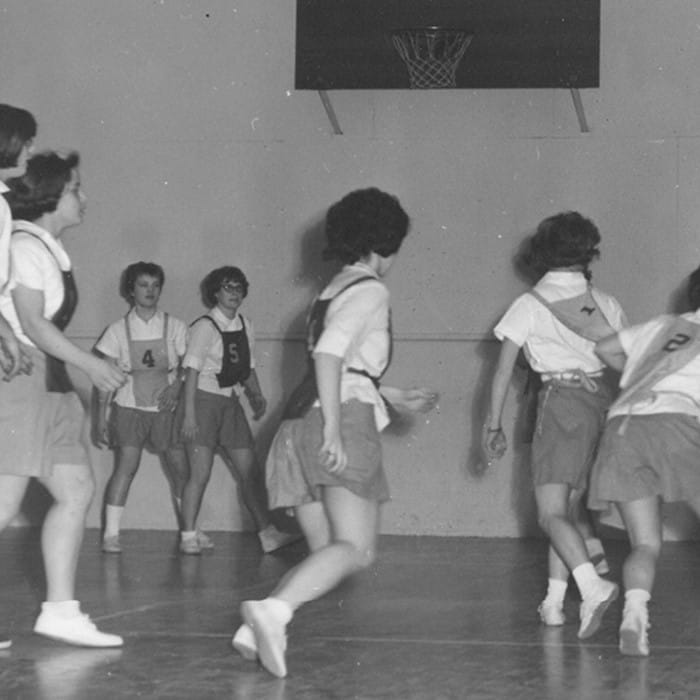
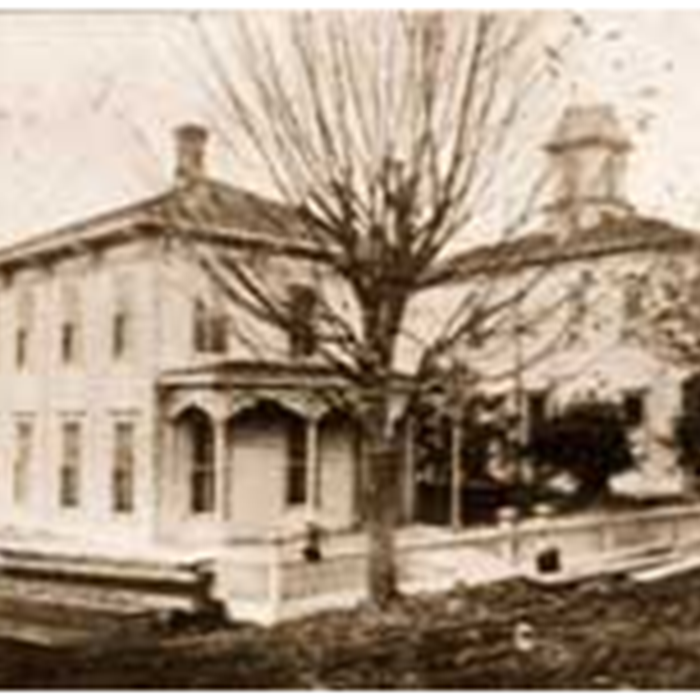
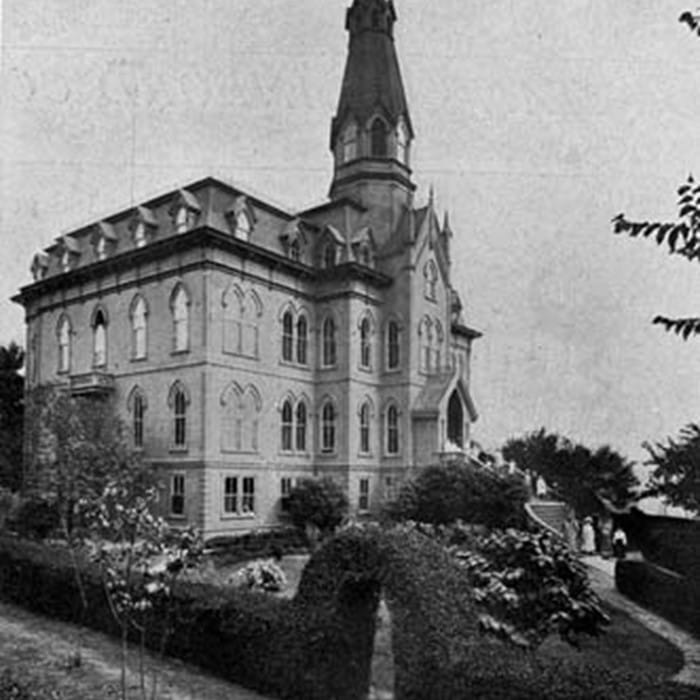
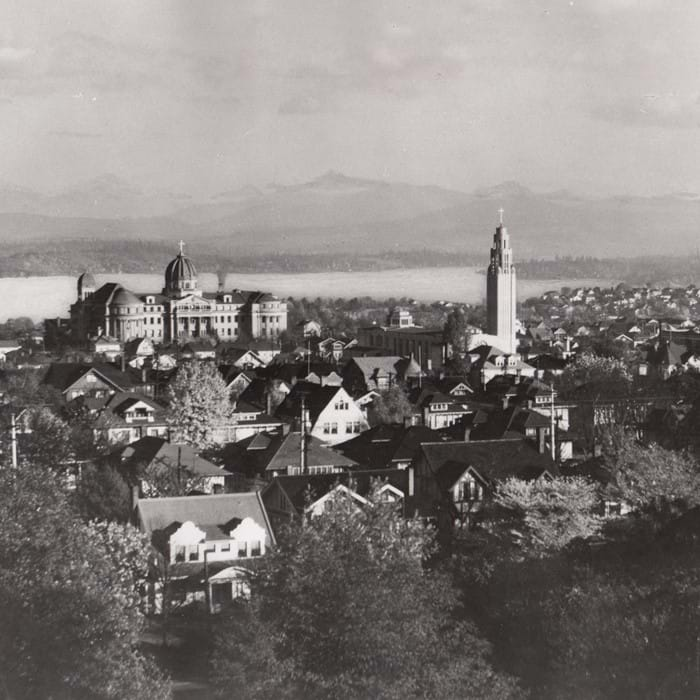
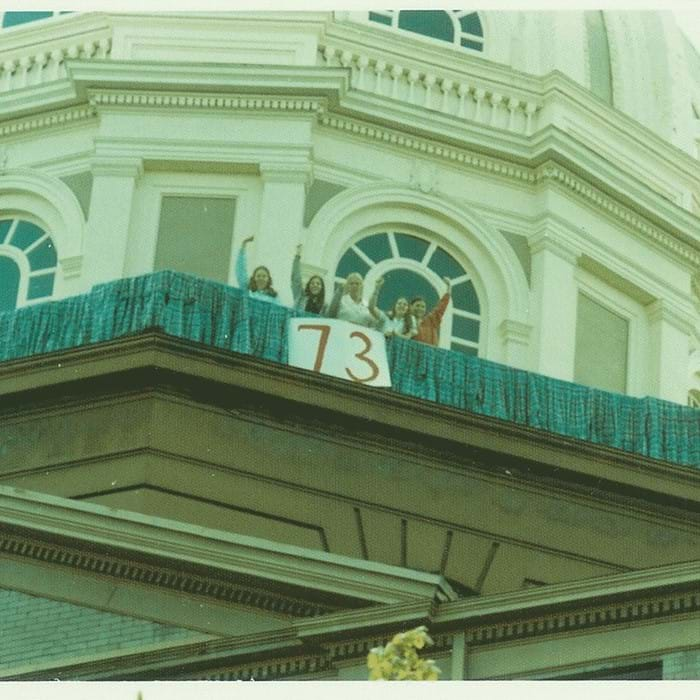


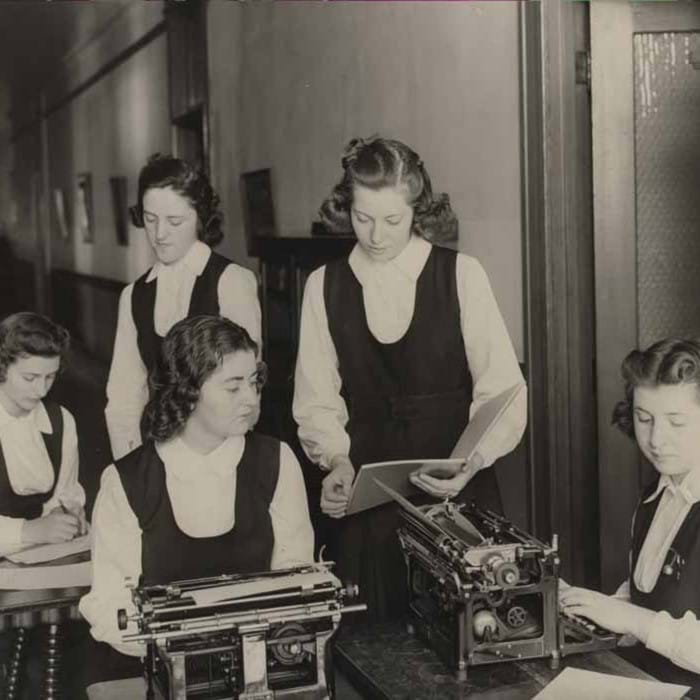



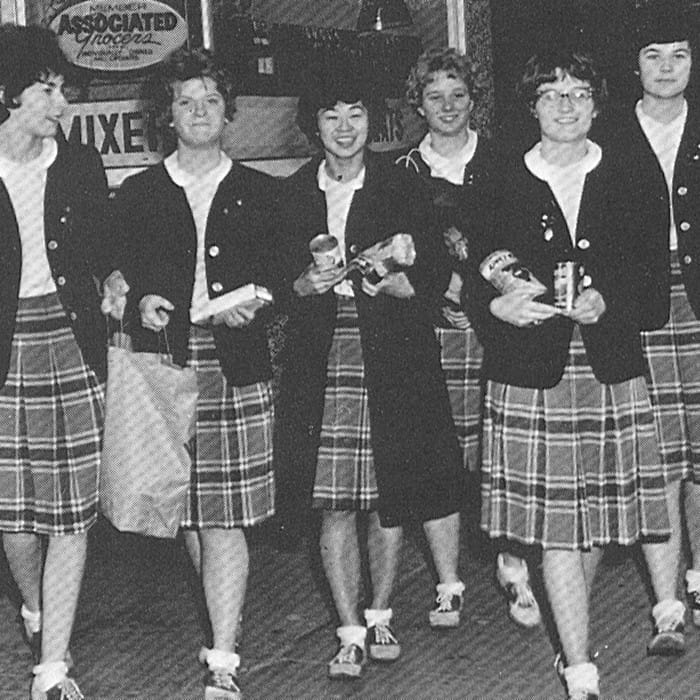
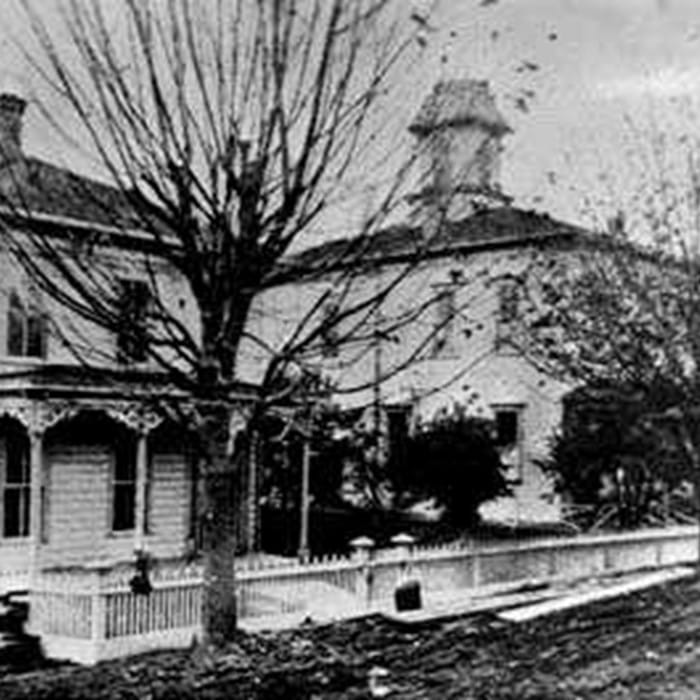
The Second Century
In 1972, the Seattle Fire Department found the seven-decade-old building out of compliance with fire safety regulations and in need of substantial renovation. The issue galvanized the HNA community of parents and friends, and the Sisters engaged an advisory board to assist with fundraising and facility planning. This board evolved into a high-functioning Board of Trustees, which became the policy-making body for the school and assumed full responsibility for the fiscal health of the organization. In 1980, the Board of Trustees launched its first official capital campaign in order to repair the roof and dome, renovate the physics lab, and create a college counseling center. On June 21, 1985, Holy Names Academy was separately incorporated from the Sisters of the Holy Names of Jesus and Mary. This mutual agreement, the outcome of a strong and vibrant relationship with the sisters that continues today, ensures the Academy’s long-term future.
Under the Dome
The imposing architecture of the main Academy building, designed in the neo-classical style by Albert Breitung, has been carefully preserved over the years. Few exterior changes have occurred other than the removal of the north tower after a 1965 earthquake. Inside, however, classrooms and offices have been remodeled, technological infrastructure upgraded, and new facilities added, such as a professional-grade recording studio and a fitness center. Renovations have always been respectful of the school’s history; for example, new moldings and floors match the originals throughout the building, and the old laundry chutes now house technology cables. The campus was enhanced in 1990 by the addition of a separate gym building on what had once been tennis courts and by the 2017 creation of a three-story pavilion connecting the gym and the historic school. In 2021, a new athletic complex and an underground parking garage opened.
Campaigns to Secure the Present—and the Future
Until the building of the Jeanne Marie McAteer Lee Gymnasium in 1990, all student athletic practices and competitions were held in rented or loaned spaces. The new structure provided a valuable resource as HNA developed a championship athletic program.
In the mid-1990s, a third capital campaign, Secure the Future, resulted in extensive improvements that coincided with the growth of the school’s program and enrollment: new science, technology, and art facilities; classroom renovations; computer networking of the entire school; dome and parlor restoration, and endowment growth.
A fourth capital campaign, Momentum: Advancing the Mission in 2004, raised over $4.6 million to support complete replacement and redesign of the roof and cornices on the main building, construction of a new high-tech music facility, and strengthening of the endowment.
In the wake of a long-range study in 2012, an endowment and building campaign, Transcend: Beyond Excellence, raised over $10.5 million, the majority for scholarship endowment to strengthen the school’s commitment to keeping an Academy education affordable to young women from a variety of economic backgrounds. The campaign also funded a new science center, a robust wireless system, and a renovated cafeteria.
The three-story Mary Herche Pavilion, which opened in 2017, joined the landmark 1908 building to the 1990 gymnasium. The pavilion includes a fitness center, commons area, rooftop deck, and other improvements, including an ADA-accessible elevator in the main building to supplement the historic elevator.
Foundation for the Future: New Athletic Complex & Underground Parking Garage
By 2018, the Academy recognized challenges to the school’s long-term sustainability, notably the acute lack of parking in a rapidly changing Capitol Hill neighborhood and insufficient facilities for a thriving athletics program. In response, the school undertook one of the largest capital initiatives in its history, the Foundation for the Future campaign to support the construction of an underground parking garage and a new athletic complex atop it. Starting in 2019, the previous gym was removed, the site was excavated for a five-level, 243-vehicle garage, and a new Jeanne Marie McAteer Lee Athletic Complex rose at the Roy Street end of the HNA campus. Despite delays due to the Covid-19 pandemic, the $36.4 million project was completed in fall 2020—on time and on budget.

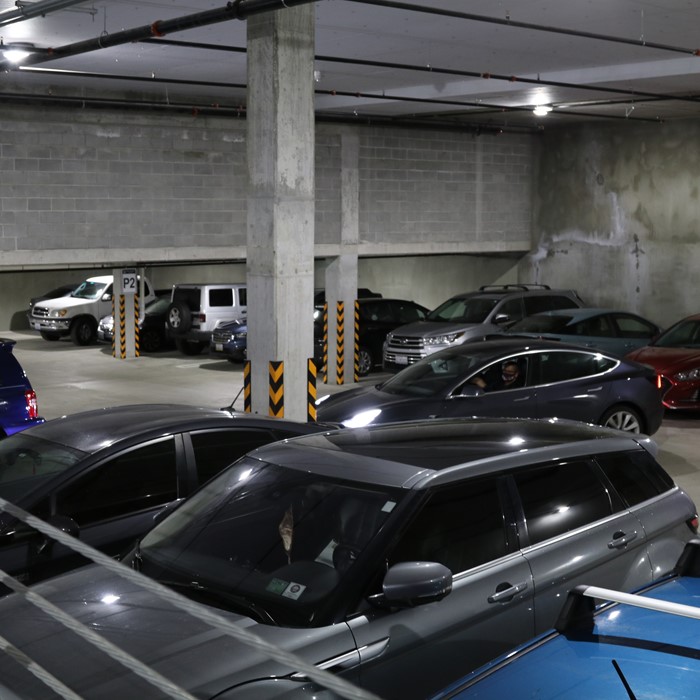
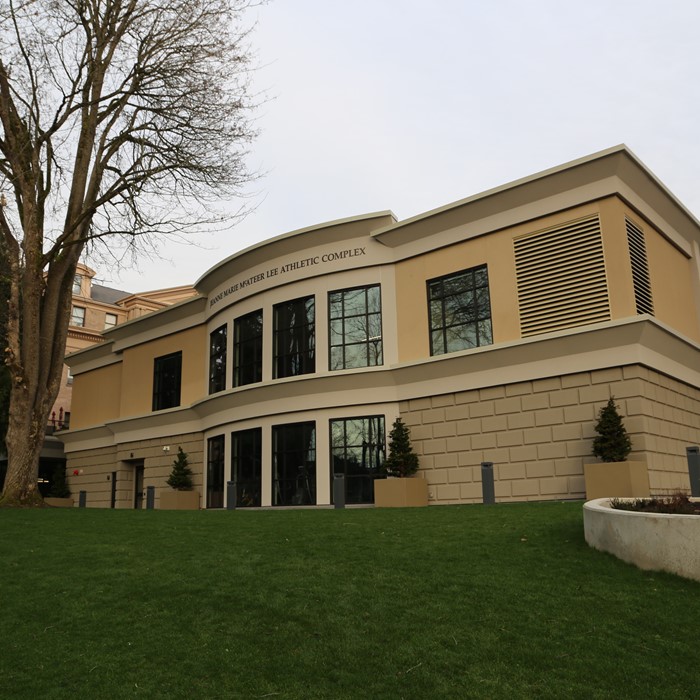
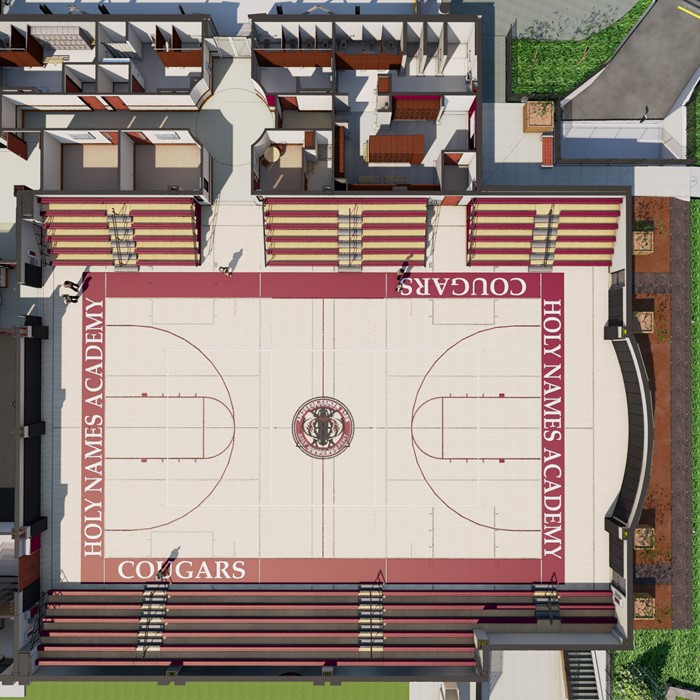
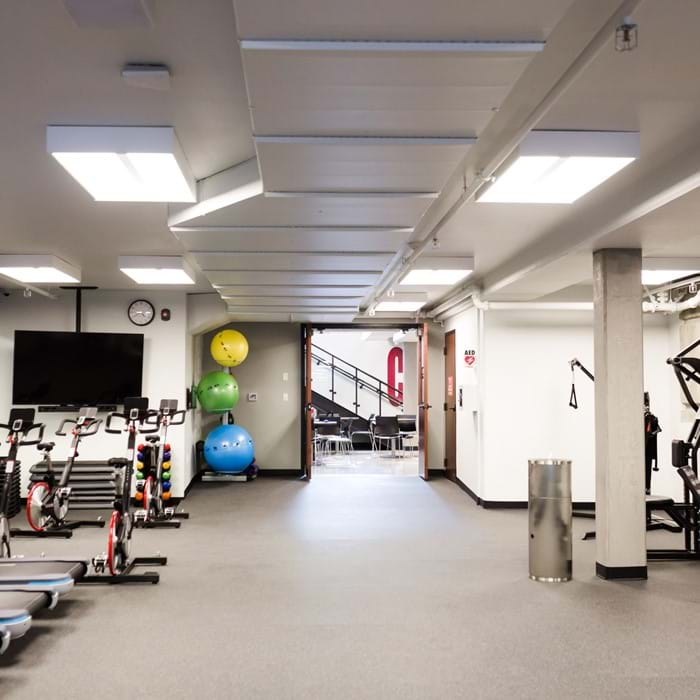
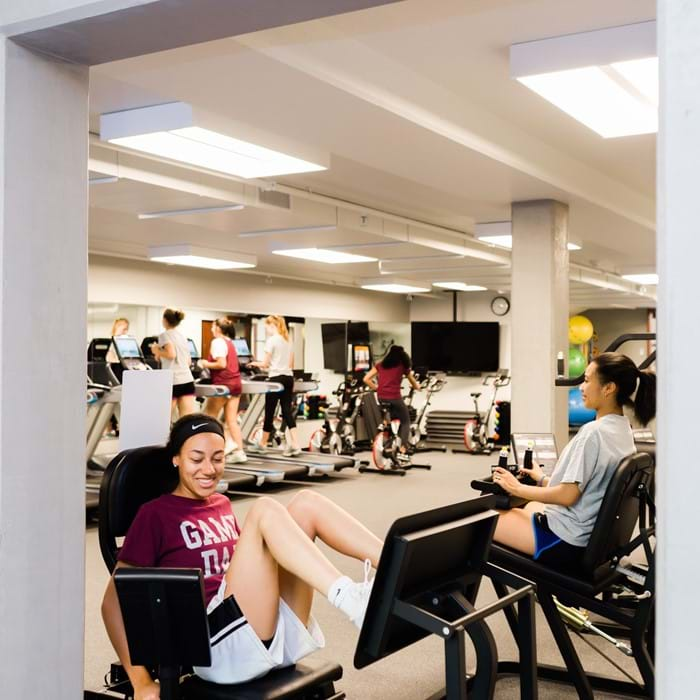



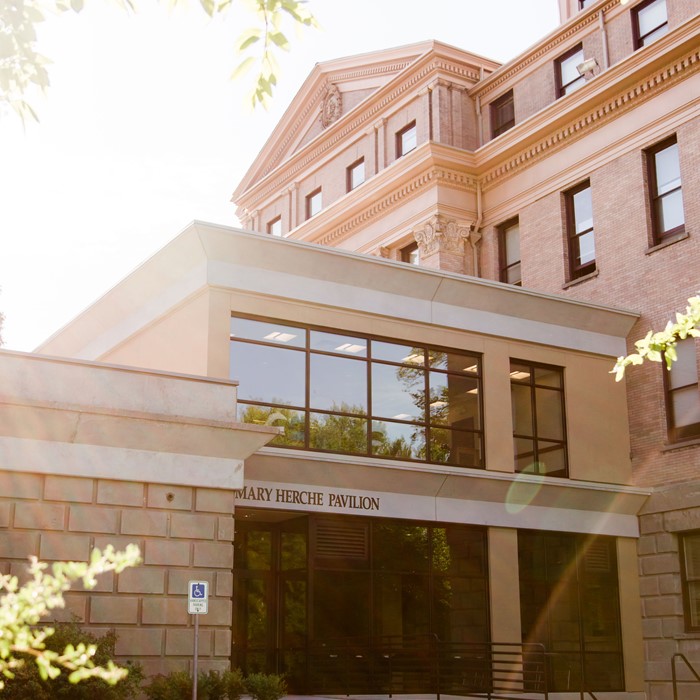
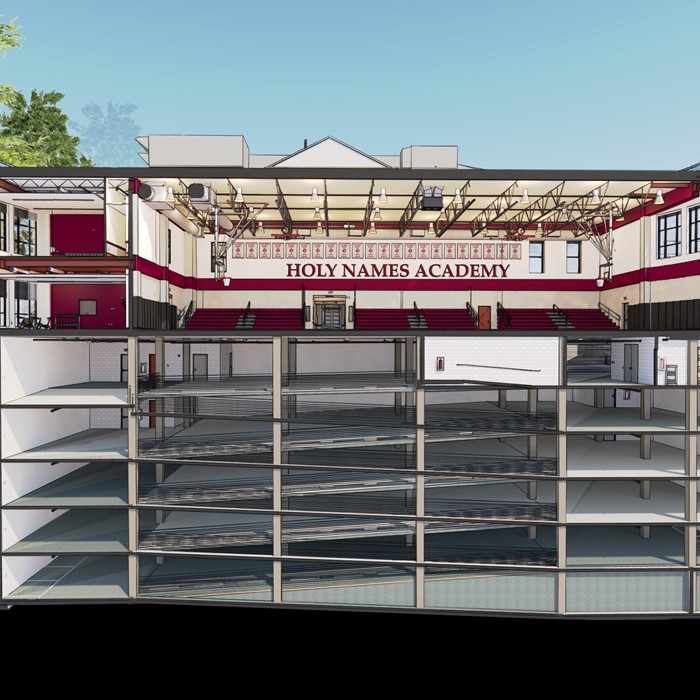
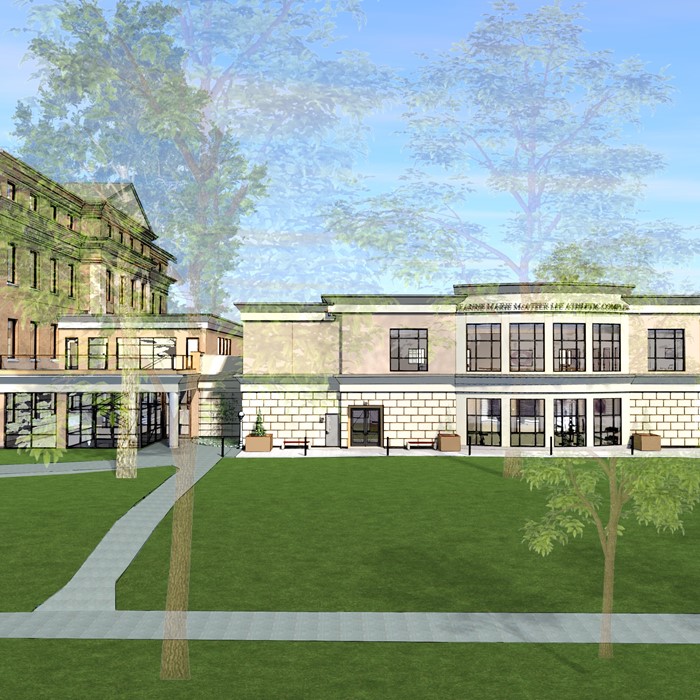
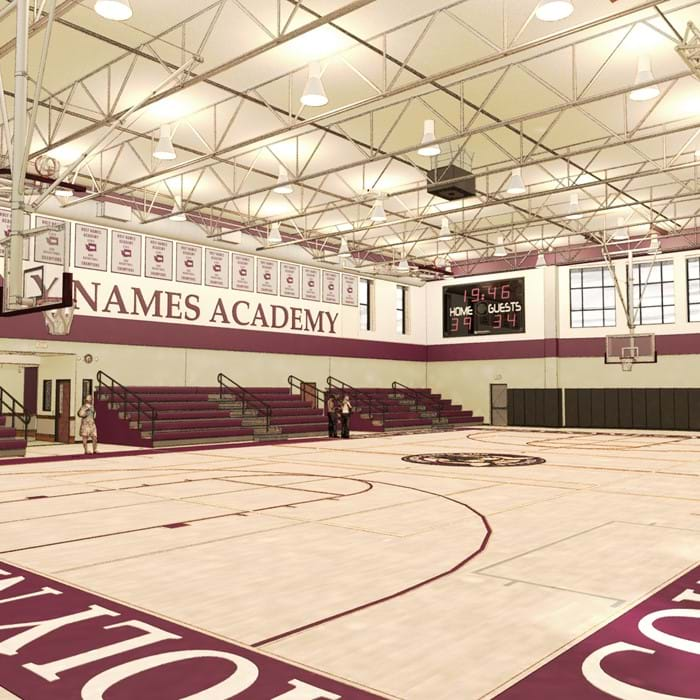
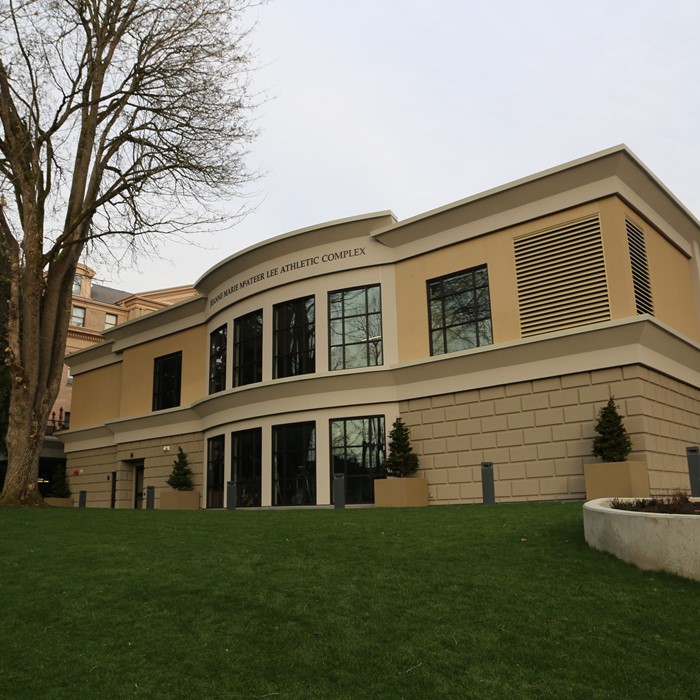
HNA Today
Today, those entering the Academy find within the traditional walls a future-oriented academic program and facility. They encounter an optimal learning environment in which students succeed wonderfully in all arenas: an extensive Advanced Placement program, pace-setting commitment to digital learning and STEM subjects (science, technology, engineering, and math), impressive arts presentations, spiritual and service commitments, and highly competitive sports teams. The school’s continuing success in enhancing its program and facilities has earned the U.S. Department of Education’s Blue Ribbon School Award four times. The Academy received first place among nonprofit organizations in a Seattle Business magazine survey of the “100 Best Companies to Work For” and has four times been ranked as one of “Washington’s Best Workplaces” by the Puget Sound Business Journal.
Guiding Vision
More than 11,000 young women have graduated from Holy Names Academy. Students today inherit the traditions of the past while preparing for success in the contemporary world. They discover that an Academy education includes not only academics and activities but values that have been present from the beginning. What continues to inspire the school community is the guiding vision of Mother Marie Rose as expressed in the Holy Names Academy Mission Statement and as lived out in every aspect of school life.
Holy Names Academy Dedicates Heritage Center
A vivid, living-history space celebrates the SNJM Sisters and the influence of the school they nurtured. In 2019, Holy Names Academy dedicated the Heritage Center, a space in the historic school building designed to honor the Sisters of the Holy Names of Jesus and Mary and to record the history and impact of the Academy on the Seattle region. The Heritage Center is located on the second-floor library wing, in what was most recently a computer lab. In 1880, when the Sisters opened what today is Washington’s oldest, continually-operating school, they occupied the first of two locations in downtown Seattle. In 1908, they moved to the baroque Revival-style building on 21st Avenue. The Heritage Center documents the founding Sisters’ long journey from their base in Québec, their dedication in launching the school and then moving to “the wilds” of Capitol Hill, and the profound influence of SNJM charism on the city and region that flourished alongside the Academy.
“We are fortunate that the Sisters kept detailed daily chronicles of school and community events throughout the years that they lived in residence,” says Head of School and Principal Liz Swift ’71. These unique, hand-written, day-by-day accounts, which are interwoven with national and local Seattle history, are a treasure. Now transcribed and digitized, the electronic documentation of the chronicles makes reading and researching easier. The Sisters also left a wealth of archives, including many printed and photographic records documenting the history of the school and Seattle. The new Heritage Center features history panels with rare and fascinating photographs, an illustrated timeline, display cases for artifacts, and interactive digital-search kiosks. Its creation was coordinated by the school’s archivist (and former Alumnae Director), Christie Spielman ’68.
You can read more about the Heritage Center here.
